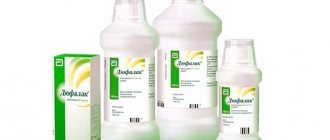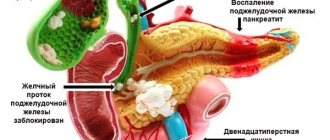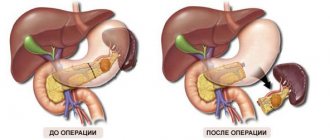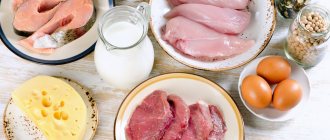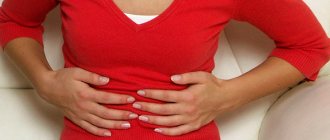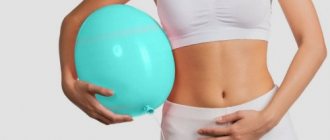Choleretic tea: Pixabay Medicinal plants are the main means of traditional medicine. Her work is used by professional doctors. Therefore, choleretic herbs are often prescribed to prevent diseases of the digestive system. Certain herbs can cure and prevent bile stagnation. The article provides information about which choleretic herbs for bile stagnation have proven effective and how to drink them correctly, as well as possible contraindications for their use. Read and be healthy.
About problems with bile secretion
Bile is produced in liver cells - hepatocytes, then enters the liver and bile ducts, and accumulates in the gallbladder. If a person starts eating, impulses begin to be generated in the central nervous system. In response to them, bile is released from the bladder into the duodenum to digest food.
It has many functions:
- neutralizes residual hydrochloric acid in the intestines;
- hydrolyzes fats, ensures their absorption;
- activates pancreatic and intestinal enzymes;
- ensures complete absorption of nutrients, including vitamins and mineral salts.
If at some stage of the formation or separation of bile a failure occurs, then first of all this affects digestion. Choleretic herbal infusions often help solve the problem. After all, the properties of many of them are identical to the functions of bile.
Choleretic tablets for bile stagnation
There are many drugs with a choleretic effect in the form of tablets, the most popular of which can be placed in the table:
| A drug | Description |
| Odeston | The main active ingredient is hymecromone, which is involved in the production and excretion of bile fluid, relaxes the ducts, and reduces spasms. Prescribed in the presence of a stagnant process and to reduce the risk of the formation of cholesterol plaques. |
| Nikodin | Among the components are derivatives of formaldehyde and amidanicotinic acid. Used for congestive processes, inflammation in the gallbladder |
| Oxafenamide | The active substance is osalmide, which has a pronounced choleretic and antispasmodic effect. Increased bile production and relaxation of the bile ducts eliminate congestion. |
| Flamin | It contains immortelle extract, which has choleretic, antispasmodic and antibacterial effects. |
How to determine if there is stagnation of bile?
Bile is needed to digest food. But when it stagnates, the work of not only the stomach, intestines, liver, but also many other internal organs and systems is disrupted.
This manifests itself as follows:
- dull pain in the right hypochondrium;
- frequent belching;
- heaviness after eating;
- dark urine and light feces;
- constipation or diarrhea;
- bad breath;
- fatigue, drowsiness;
- bitterness in the mouth;
- skin itching.
There are a number of diagnostic techniques with which the doctor will accurately determine the cause of poor digestion. He will decide what to do for the outflow of bile - use medicinal herbs or take pills.
How to understand that the drug has begun to work
The positive effect of the drug is due to a decrease in intensity or complete disappearance of pain and spasms if they are present in the anamnesis. If an inflammatory process was present, its intensity decreases with a decrease in the severity of the corresponding symptoms.
It is possible to find out whether the drug has started to work or not using other methods by conducting appropriate laboratory tests, the results of which determine an increase in the functional capacity of the liver, an increase in the secretion of bile and the content of cholates in it, and a decrease in the viscosity of the liquid.
The role of herbal medicine
Choleretic herbs in the pharmacy are presented in a large assortment. They are used as aids in the treatment of liver and gallbladder diseases. Another area of use of medicinal herbs is the prevention of stone formation. The composition of bile is represented by bile acids, cholesterol, bilirubin, phospholipids, and proteins. When it stagnates, the concentration of these substances increases, which leads to the formation of stones.
How long can you drink choleretic herbs? If bile secretion disorders occur rarely, then medicinal plants are used as an “ambulance”. Two cups of aromatic infusion are enough to improve the functioning of the digestive organs. And if you are predisposed to the process of stone formation, doctors recommend taking herbal infusions in courses - 2-3 times a year for a month.
Food
If you consume foods with a choleretic effect every day, you can forever forget about problems with the biliary tract. Such food enhances fluid production and accelerates its entry into the intestines.
The daily diet should include 80-90 g of vegetable fats, which are found in sunflower, olive, corn, and peanut oil. The greatest benefit comes from olive oil, which improves digestive function in general. Heat treatment of oils is not recommended. They should be consumed in their pure form, for example, dressing vegetable salads.
Products containing ascorbic acid have a choleretic effect. Their additional function is to prevent the formation of stones in the gallbladder. Useful to use:
- celery, rhubarb, spinach, dill;
- carrots, tomatoes;
- beets, cauliflower, other cruciferous vegetables;
- lemons, oranges, grapefruit, sour fruits and berries.
Some seasonings and spices also have a choleretic effect. These include ginger, which is consumed in freshly grated form, that is, in powder form. Turmeric and chicory are useful.
Groups of choleretic herbs
Herbs with a choleretic effect are conventionally divided into three groups. This classification is based on the mechanisms of their effect on organs:
- Cholekinetic herbs - tansy, corn silk, immortelle . Under the influence of bioactive substances from their chemical composition, the tone of the smooth muscle layers of the gallbladder and bile ducts increases. They begin to contract intensively, pushing bile into the duodenum.
- Choleretic herbs - agrimony, milk thistle, barberry . Under their influence, the composition of bile improves, including an increase in the content of bile acids. At the same time, the ducts and bladder are cleared of toxic substances, the production of digestive enzymes by the pancreas is stimulated, and congestive processes are stopped.
- Antispasmodic herbs - dandelion, chicory . Unlike cholekinetics, plants with antispasmodic action relax the walls of the gallbladder, promoting the unhindered outflow of bile. Painful and other discomfort associated with spasms disappear, and liver function is optimized.
Which plants are best used to normalize the flow of bile depends on the cause of its stagnation. If it is not associated with a developed disease, then preference should be given to choleretics.
Choleretic drugs for bile stagnation
Taking into account the leading mechanism of action of the drugs included in this group, they are conventionally divided into several types:
- choleretics;
- cholekinetics;
- Cholespasmolytics.
Conditional separation is called due to the fact that many choleretic agents have a complex effect, that is, they simultaneously enhance the production of bile fluid and facilitate its entry into the duodenum.
Choleretics
Choleretic drugs have the following effects on the human body:
- stimulate the formation of bile fluid (reflexively, influencing intramural nerve cells, and hormonally, enhancing the production of intestinal hormones);
- stimulate the formation of hepatocytes;
- enhance the osmotic filtration of electrolytes into the capillaries of the gallbladder;
- increase the amount of salts present in the bile fluid, reducing its lithogenicity;
- increase the production of lipase and bicarbonates by the pancreas;
- reduce the intensity of the fermentation process in the intestinal environment, adjusting the composition of the flora.
Representatives of the group of choleretics and the characteristics of their effects on the body can be placed in the table:
| A drug | Description |
| Hologon | Enhances the synthesis of primary bile acid, accelerates the production of fluid and acid salts. The drug also helps to enhance the filtration of electrolytes in hepatocytes, normalizes blood circulation in the liver, and has a diuretic and laxative effect. |
| Allohol | Helps stimulate the secretion of bile fluid and acids, reduces lithogenic properties, reduces flatulence, fermentation, and has a laxative effect. |
| Holenzym | Accelerates bile production, but has almost no effect on its volume. Has a cholespasmolytic effect. |
| Liobil | Helps reduce the level of cholesterol in bile, improves hydrolysis and absorption of fats by the small intestine. |
Cholekinetics
Drugs from the group of cholekinetics irritate the receptors of the intestinal mucosa, which causes a reflex increase in the production of endogenous cholecystokinin. The latter is a polypeptide produced by cells of the duodenal mucosa.
The polypeptide stimulates contraction of the gallbladder and normalizes the production of digestive enzymes by the pancreas. After cholecystokinin enters the bloodstream, it penetrates the capillaries of the bladder, activating the smooth muscles and relaxing the sphincter of Oddi. This leads to increased flow of bile fluid into the duodenum, preventing stagnation.
Properties of choleretic herbs
Plants that promote the outflow of bile are almost no different in their mechanism of action from pharmacological drugs. But there is a difference between them, and quite significant. The fact is that leaves, fruits, flowers, roots contain many biologically active substances.
And they exhibit a variety of effects:
- stop inflammatory processes;
- eliminate pain of any localization;
- stimulate increased appetite;
- prevent increased gas formation;
- help cleanse organs and tissues of toxic substances;
- activate metabolism and restoration of damaged tissues;
- block free radicals that destroy healthy cells.
In combination, beneficial organic compounds normalize the activity of all organs that take part in digestion. This becomes an excellent prevention of the development of diseases, including those affecting the liver and gall bladder.
Features of taking choleretic drugs
Before taking medications with a choleretic effect, you must remember that taking them is effective only before meals. In most cases, drugs are prescribed for a long period - from 14 days.
After taking the tablet, an adverse reaction may occur in the form of diarrhea, nausea, and heartburn. Taking the product before meals reduces the risk of unwanted symptoms. Indications for the use of choleretic drugs include:
- development of chronic inflammatory and viral diseases of the liver and biliary tract;
- development of cholecystitis, cholangitis in chronic form;
- the presence of a stagnant process in the gallbladder;
- presence of biliary dyskinesia;
- prolonged constipation.
The doctor may prescribe complex treatment with choleretic drugs and antibiotics, analgesics, and laxatives.
Recommended video:
During pregnancy
Not every medicine can be taken during pregnancy. This also applies to drugs with a choleretic effect, of synthetic and natural origin. According to doctors, it is better to purchase a homeopathic remedy, for example, Berberis-Homaccord.
The drug has an antispasmodic effect, so it is used in complex therapy of the biliary tract and inflammatory processes in the corresponding area.
For children
In childhood, choleretic agents are selected taking into account age and weight. In most cases, drugs containing valerian or Magnesium sulfate, Magnesia, Cormagnesin are used.
Restrictions and contraindications
Herbal medicine is not carried out in case of individual intolerance to the plant, during pregnancy and breastfeeding.
The use of any plants is prohibited under 12 years of age, unless they are part of special children's fees. People with a predisposition to developing allergic reactions should be careful.
An absolute contraindication is cholelithiasis. The use of infusions with a hepatic-choleretic effect will provoke the passage of the stone. If it is large, then there is a high probability of damage and even rupture of the bile duct, opening internal bleeding.
The best choleretic herbs
The chemical composition of almost every medicinal plant contains a bioactive substance that has a positive effect on the condition of the gallbladder. But there are also those that contain such organic compounds in large quantities.
The list of choleretic herbs is headed by:
- agrimony;
- milk thistle;
- barberry;
- tansy;
- corn silk;
- immortelle;
- dandelion;
- chicory;
- yarrow;
- coriander.
Most of them are also beneficial for the liver, stimulating its secretory function and restoration of damaged hepatocyte cells.
Agrimony
Agrimony contains a lot of essential oil, vitamins PP and K, flavonoids, saponins, and alkaloids. In combination, they relieve spasms of the gallbladder and reduce the severity of pain. They also improve the functioning of the hematopoietic system and inhibit the formation of cholesterol plaques.
To prepare the infusion, pour a teaspoon of agrimony into a glass of boiling water, leave for 10 minutes, and filter. Take it three times a day an hour before meals.
Milk thistle
Milk thistle changes the composition of bile, stimulating its optimal discharge. Taking the infusion has a positive effect on the functioning of the liver. Now it produces bile in a timely manner, and its cells are cleansed of toxic substances and quickly recover from damage.
A teaspoon of crushed rhizomes is poured into a glass of boiling water, filtered after three hours, and taken 2-3 tablespoons before meals. Milk thistle is also used in dry form. A teaspoon of meal (sold in pharmacies) is simply swallowed with water.
Barberry
Berries, roots, and leaves of barberry are used in medicine. And only the latter have a fairly pronounced choleretic effect. After drinking aromatic tea, digestive disorders ease and signs of inflammation in one of the gastrointestinal tracts disappear.
A healthy drink is prepared by infusing a teaspoon of dry crushed leaves in a glass of boiling water. Then it is slightly cooled, filtered, and drunk 1/3 glass during meals.
Tansy
Tansy herbal tea is a popular choleretic remedy in both folk and official medicine. It increases bile production, prevents its stagnation, and indirectly improves food digestion and nutrient absorption.
Preparing the infusion is simple. Pour a teaspoon of plant material into an enamel bowl, pour in 200 ml (a glass) of boiling water, cover with a lid, and leave for a quarter of an hour. Cool, filter, take 1/2 glass twice a day with meals.
Corn silk
The herbal remedy has choleretic, diuretic and antispasmodic effects. It also helps dissolve and remove small stones from the urinary system. Corn silk contains many useful vitamins and mineral salts.
To prepare the decoction, place 2 tablespoons of the raw material in a small container, pour in 200 ml of hot boiled water, cover with a lid and simmer in a water bath for half an hour. Cool, filter, take 1-3 tablespoons with meals.
Immortelle
Immortelle is an excellent choleretic agent. It helps reduce the risk of developing cholelithiasis, relieve spasm of the smooth muscles of the intestines, bile ducts and blood vessels. After drinking herbal tea, the heaviness in the stomach and pain in the gall bladder disappear.
Pour a teaspoon of dry plant material into a teapot, pour a glass of boiling water and leave for an hour. Strain, take 100 ml three times a day with meals.
Dandelion
Dandelion is valued for its powerful choleretic and antispasmodic properties. Thanks to its multicomponent chemical composition, the infusion also has an antimicrobial, diuretic, regenerating (restorative) effect. It is usually used for bile stagnation caused by eating fatty foods.
Pour two tablespoons of dry raw materials into a thermos, then add 200 ml of hot water and simmer in a water bath for half an hour. The infusion is filtered and the volume is adjusted to 200 ml. Take a quarter glass with meals.
Chicory
Previously, chicory was used primarily as a tonic. But several decades ago it turned out that they are largely due to the ability to stimulate the flow of bile and improve digestion. Chicory also cleanses the body of toxic substances and strengthens the immune system.
A quarter teaspoon of ground, dried root is poured into 300 ml of water, simmered under the lid over low heat for 5 minutes. Cool, filter, drink instead of regular tea or coffee.
Yarrow
Yarrow increases the content of bile acids in bile, improving the quality of digestive processes. It is often used for intestinal bloating due to excessive gas formation. The infusion of the medicinal plant also has antiallergic and bactericidal properties due to the high content of essential oils, chamazulene and tannins.
Place a tablespoon of chopped herbs in an enamel container, pour in a glass of boiling water, cover with a lid, and leave for an hour. Cool, filter, take half a glass of warm infusion half an hour before meals.
Coriander
In modern medicine, coriander or cilantro is as popular as in ancient medicine due to its various medicinal properties, including choleretic properties. It also copes well with swelling and removes excess water from the body. By this, coriander facilitates the functioning of the kidneys and cardiovascular system.
Add a pinch of ground plant to black or green tea and drink a glass in the evening. But it’s better to season fresh vegetable salads, soups, side dishes and even baked goods with it.
Choleretic herbs for bile stagnation
Bile fluid is involved in the digestion of fats that enter the body with food. You can improve the composition and performance of the liquid by taking products based on natural herbs, especially corn silk, milk thistle, and tansy.
Many of the herbs are involved in bile production. These are dandelion and celandine. In addition, they dilute it, improve the functioning of the bladder, and normalize the outflow of fluid into the duodenum. Natural components strengthen the muscular apparatus of the bladder and relax the walls of the ducts.
No less effective are products based on birch leaves, which are involved in improving the flow of bile fluid into the intestines and have a pronounced anti-inflammatory effect.
Self-treatment with choleretic herbs is not recommended. Although they have a natural composition, they can still cause negative reactions in the form of allergic rashes. Contraindications to herbal therapy include jaundice. In this case, the bile ducts narrow, causing complications for the liver.
Other restrictions are:
Herbal remedies for bile stagnation
If you combine the best choleretic herbs, you will get a collection with a pronounced therapeutic effect. But for occasional digestive disorders, this is not always useful. Therefore, the collections are “diluted” with plants that gently improve the functioning of the gastrointestinal tract and the entire body as a whole. These are chamomile, calendula, birch buds, sage, mint, coltsfoot.
Here is a list of high-quality choleretic fees:
- To eliminate stagnation of bile, half a teaspoon of calendula, mint, tansy, chamomile, and yarrow is placed in an enamel bowl and poured with a glass of hot boiled water. Simmer in a water bath for a quarter of an hour, cool for 45 minutes, filter. Take half a glass orally half an hour before meals.
- To improve the quality of bile, half a teaspoon of agrimony, milk thistle, yarrow, coriander is placed in an enamel bowl, poured with 300 ml (1.5 cups) of hot boiled water. Cover the container with a lid and simmer in a boiling water bath for a quarter of an hour. Cool at room temperature, strain, take 1/2 cup half an hour before meals.
- For discomfort in the right hypochondrium . Place a teaspoon of dandelion, chicory, calendula, birch buds in an enamel bowl and pour 300 ml (1.5 cups) of boiling water. Leave at room temperature for 45 minutes, filter. Take 1/2-1/3 cup with meals.
The shelf life of the decoction or infusion is 2 days. Store them on the bottom shelf of the refrigerator and be sure to shake before use.
What's new in herbal medicine for bile stagnation?
Many herbs are actively used for bile stagnation, but only by traditional medicine specialists. To justify their use in scientific medicine, complete data on the characteristics of the chemical composition are required. To determine it, modern methods of analysis are needed. And they are successfully applied in practice. For example, powerful choleretic properties have been found in the following plants:
- Common harmala, known in ancient Eastern medicine under the very specific name burial ground. In Tajikistan, it has been used for centuries as a choleretic, sedative, diuretic and diaphoretic.
- Plants of the genus Gorlyukha are used in folk medicine to treat diseases complicated by stagnation of bile. Hawkweed has a choleretic, analgesic, mild laxative and antispasmodic effect.
In the course of research, scientists have found that these herbs serve as valuable sources of micro- and macroelements and exhibit undoubted therapeutic effects. At the same time, they are in an accessible and digestible form. Now pharmacologists consider plants as an important component of medicines obtained from plant materials.
Sources
- Gadzhieva N.N., Faradzhev S.A., Makhmudzade F.M. Radionuclear, microelement composition and radiation sterilization of the harmala Peganum Harmala of Absheron - International scientific journal alternative energy and ecology 2009, 7, 120-125.
- Karomatov I.D. Glossary reference book on oriental medicine and alternative methods of diagnosis and treatment for general practitioners - Tashkent, Fan, 2010, 284 p.
- Budantsev A.L. Plant resources of Russia: Wild flowering plants, their component composition and biological activity. T. 5. Family Asteraceae (Compositae). Part 2. genera Echinops -Youngia. St. Petersburg; M.: Partnership scientific. ed. KMK, 2013. 312 p.
- Gupta SD Chemical investigation on Picris hieracioides Linn. and Phaylopsis parviflora Willd. // J. Indian Chem. Soc. 1973.Vol. 50. 8. P. 556.
- Journal of Ethnopharmacology. Volume 107, Issue 3, October 11, 2006, pages 313-323. Taraxacum – an overview of its phytochemical and pharmacological profile, Katrin Schütz Reinhold Karle Andreas Schieber.
